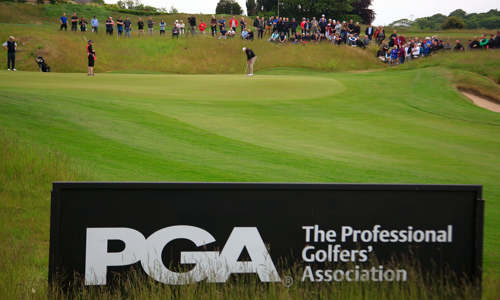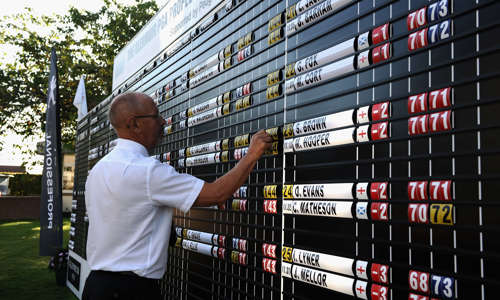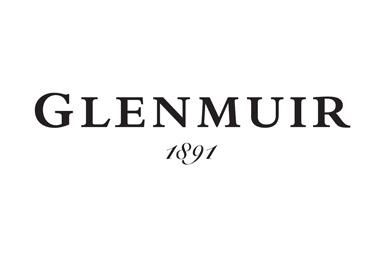Farnham Head Professional, Luke Bone, shares some of his coaching methods that have seen him coach ANWA champion Lottie Woad to victory.
Luke Bone did not start playing golf until he was 16, but he soon became obsessed with the game – getting down to a three handicap in his first year and then quickly down to scratch.
The Farnham Head Professional began his PGA training at the age of 20 and has since played on the PGA regional circuit with some success – getting to the final of the National Pro-Am Championship twice.
But it is coaching where he has really made his name – most recently as part of Lottie Woad’s team, accompanying her as her swing coach to the Augusta National Women’s Amateur (ANWA) and witnessing her victory there. Here Bone shares some of the coaching tips that have contributed to his success.
Bone has been Lottie Woad’s coach since she joined the junior section at Farnham Golf Club at the age of eight and was with her every step of the way when she won the Augusta National Women’s Amateur (ANWA) earlier this year and took top spot on the Women’s World Amateur Golf Rankings.
Asked how his journey with Lottie has helped him develop as a coach, he said: “I’ve learned a lot from seeing what she’s done, firstly in the Surrey coaching setup, then on to the South region training and now as part of the England Golf set-up at a national level. Most of all, it’s made me realise that there’s making a good golf swing or a person who can hit the ball and then there’s making one who understands process and how you practice, learning discipline in what you are doing.”
Junior Golf
It is absolutely fundamental for golf clubs to run junior programmes. The academy at Farnham is now run by two coaches who I have tried to influence in their coaching. Not in the way that I tell them what to do, but to encourage them to try to be explorative rather than constraints-led. You see skills flourish as a result of that.
When I first started coaching Lottie, I was straight out of the PGA training and in my very early days of coaching. It was all based around getting the fundamentals right, working on grip, posture, takeaway.
The interesting thing is that if I had that time back again and was coaching those seven-to-10year-olds, I would do it in a fundamentally different way. Now it would be more about exploration and skill development and task orientation from the very beginning.
Golf training aids
The GolfHammer by Kendal McWade is one of my favourites. I would also list Kendal as one of my biggest influences as a coach, alongside Steven Orr. They have made me consider my own game and, more importantly, how I coach other people.
Using constraints, tasks and language to get people to consider the problem properly. I really do feel that often as coaches we are making the game too complicated. Clarity is key. Often, I feel that coaching directs the player’s attention away to secondary not primary factors.
My big philosophy is the ball does what it is told. It doesn’t know you’ve got a left arm, never mind whether it is straight or not! Of course, bending your left arm is not necessarily conducive to hitting that ball consistently, but I think we have to understand the tools we are using before we start worrying about the technique.
Luke's three tips to nurturing and developing talent:
- Firstly, you must go and find information that disrupts what you currently believe. You must learn more. I’ve done it a lot over the years. I don’t regret anything in life, but I would have liked to have started my development as a coach earlier by disrupting it earlier. Go and spend time with other good coaches, find PGA seminars to attend, go to things that maybe don’t even agree with what you think. Challenge yourself in that way. That is where you will find your own voice.
- Explore how to achieve tasks. Give pupils problems to solve not positions to hit. Do not restrict them by telling them where to put their feet or where to put their hands for as long as you can. Because I think if you get good at coaching in this way you can get people to choose the correct positions and the correct grips. What I’ve seen, as I’ve developed this method of coaching, is that people can adopt the correct things if you give them real clarity, rather than tell them in the first few hours when you meet them where to put their hands on the club.
- Learning golf has to be fun. It should be a prerequisite at every golf club that there is some sort of junior academy because it’s the future of the club, it’s the future of your golf coaches at that club and it’s the future of golf.




































